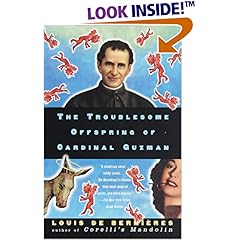
Reading Shakespeare’s plays is like studying a blueprint of a house. The framework is there along with rooms and windows, but nothing is on the walls, no finishing nor furnishings give the life to the house. That’s what the actors do.
For over twenty years, I taught Shakespeare’s
Merchant of Venice to high school freshmen, so I was interested in seeing the current production at
Chicago Shakespeare Theater on Navy Pier. Seeing the production offered some new insights and creative additions while showing me some new things about the play.
“In sooth, I know not why I am so sad…”The play begins with Antonio coming on stage and crying. That simple addition was riveting. Yes, the whole first scene talks about Antonio being sad, but to see him actually weep made it so much more forceful than just discussing it.
“Mislike me not for my complexion…”The hatred of all groups of people, not just Jews, is an inherent theme of the play. Many powerful moments in this production reinforce both the global racism and the anti-Semitism of the characters. Mike Nussbaum’s Shylock—the best characterization I’ve ever seen of the part-- not only talks about being spit upon and hit, but we actually see the violence he describes. During Shylock’s pivital speech, beginning
“Hath not a Jew eyes…,” Salerio and Salanio attack Shylock, knocking him to ground, spitting on him and in his yamulke, setting up a powerful reading of the rest of the speech:
…and if you wrong us, shall we not revenge?
If we are like you in the rest, we will resemble you in that. If a Jew wrong
a Christian, what is his humility? Revenge. If a Christian wrong a Jew, what
should his sufferance be by Christian example? Why, revenge. The villany you
teach me, I will execute, and it shall go hard but I will better the instruction.
Almost immediately after this scene comes the intermission. As the act finishes, all the characters of the play form a gauntlet through which Shylock must pass—and all the actors spit on him as he exits. I was moved to tears.
In Act V, when Jessica (showing signs of disappointment in her elopement with Lorenzo) learns that her father has bequeathed all his goods to her husband Lorenzo and herself, she cries—and all the characters laugh at her—showing their non-acceptance of the “gentle” convert.
Throughout the production, the actors sit at tables out of the acting area, but clearly visible to the audience. When asked why that directorial decision had been made, Jay Whittaker, who plays Salanio, told a group of high school attendees, “One of the problems with racism is that people watch it happen and don’t do anything to stop it.” According to Whittaker, the cast bears witness and blame for all the racism shown.
One of the complexities of the play is there is no "hook character" who pulls us in and allows us to interpret through their eyes (think Scout in
To Kill a Mockingbird). All the characters, especially the Christians, are racially bigotted, self-centered, and nasty. In seeing the production the person we find ourselves identifying with is the victim, Shylock... and Shylock spends the play plotting a murder.
For one of my students, one of the galvanizing moments of societal hatred was Launcelot Gobbo's first appearance, bringing bags of trash. When the garbage truck (a sound effect) leaves before he is ready, he calls after them, "Faggot." The majority of the audience found it funny or even ignored it. But one of my gay/straight alliance students felt under attack by his and their response.
In Belmont is a lady richly left; And she is fair, and, fairer than that word, Of wondrous virtues...While Chicago’s Portia (Kate Fry) gains power in the courtroom scene, she ultimately suffers from the same problem I’ve seen with all women I’ve seen playing the part. She’s too old. Listening to the lines with a fresh ear, I now think Shakespeare intended Portia as younger, more impetuous, more a teenager willing to risk and hazard to get what she wants. A more mature Portia becomes merely willful and conniving and nasty. Her attempt to convince Shylock that
“the quality of mercy is not strained” becomes totally planned and callous. What if instead she is younger, more naïve? What if she finds herself in a courtroom among men where the closest person to her husband is about to be murdered—in the name of justice?
[One of the jewel moments in this production is Antonio being tied to his chair with his breast exposed, weeping like a condemned man and Shylock moving toward him like the vengeful Christians we’ve seen in the production.] What if her epiphany comes as she realizes she must stop Shylock from the murdering? In Chicago’s production, she literally steps between the two men. Is this the ultimate “good deed” of the play: saving Antonio’s life at the cost of “killing” Shylock?
Say how I loved you, speak me fair in death;
And, when the tale is told, bid her be judge
Whether Bassanio had not once a love.
I have read some critics and actors who see Antonio and Bassanio as lovers. [One goes as far as saying that Antonio is gay while Bassanio is bisexual.] Although this production didn’t take that approach, I realized watching the play how logical that choice seems. Bassanio is a Jason out to steal the golden fleece. He goes after Portia because she is rich, not because he is in love with her. Chicago’s Bassanio (Timothy Edward Kane) is handsome, charismatic, romantic… but ultimately we realize that the “love” the characters claim is merely the reflection of themselves in each other’s eyes. Were I to direct the play, I would have no problem approaching the “kin” as more “kissing” than “kind.”
The man that hath no music in himself,
Nor is not moved with concord of sweet sounds,
Is fit for treasons, stratagems and spoils;
The motions of his spirit are dull as night
And his affections dark as Erebus:
Let no such man be trusted. Mark the music.
Lorenzo states one of the direct themes of the play in the last act. We see in the play that Shylock cannot abide music while Portia welcomes it. In Chicago’s production, however, that contrast is not played up as much as I felt it needs to be. The solitary silence of Shylock has to be emphasized and Portia’s Belmont must be filled with music to help contrast the two worlds. Otherwise you lose the power of Lorenzo’s speech.
Unfortunately the most effective use of sound is in the car horns and garbage trucks in the street scenes of Venice. Portia and Nerissa sing the song while Bassanio ponders the caskets, but the song is used to blatantly have Portia tell Bassanio which is the right chest. A decision which totally weakens his character.
That light we see is burning in my hall.
How far that little candle throws his beams!
So shines a good deed in a naughty world.
The Chicago production begins with a lighted candle on a stand which is blown out at the beginning. At the end, it is brought back in. This is an obvious reference to Portia’s comment about Belmont’s candle. But there are no good deeds in this production. And when the play ends with Antonio sitting looking pensively down, one wishes he would begin to cry as we saw him earlier. The world has not changed for him… and he is still not sure why he is so sad. Is that what hatred does to us?
The production runs until November 12.
 The picture at left is based on a sketch by Dante Gabriel Rossetti of angel and knight.
The picture at left is based on a sketch by Dante Gabriel Rossetti of angel and knight.Daniel Chester French, The Angel of Death and the Sculptor, 1889


















